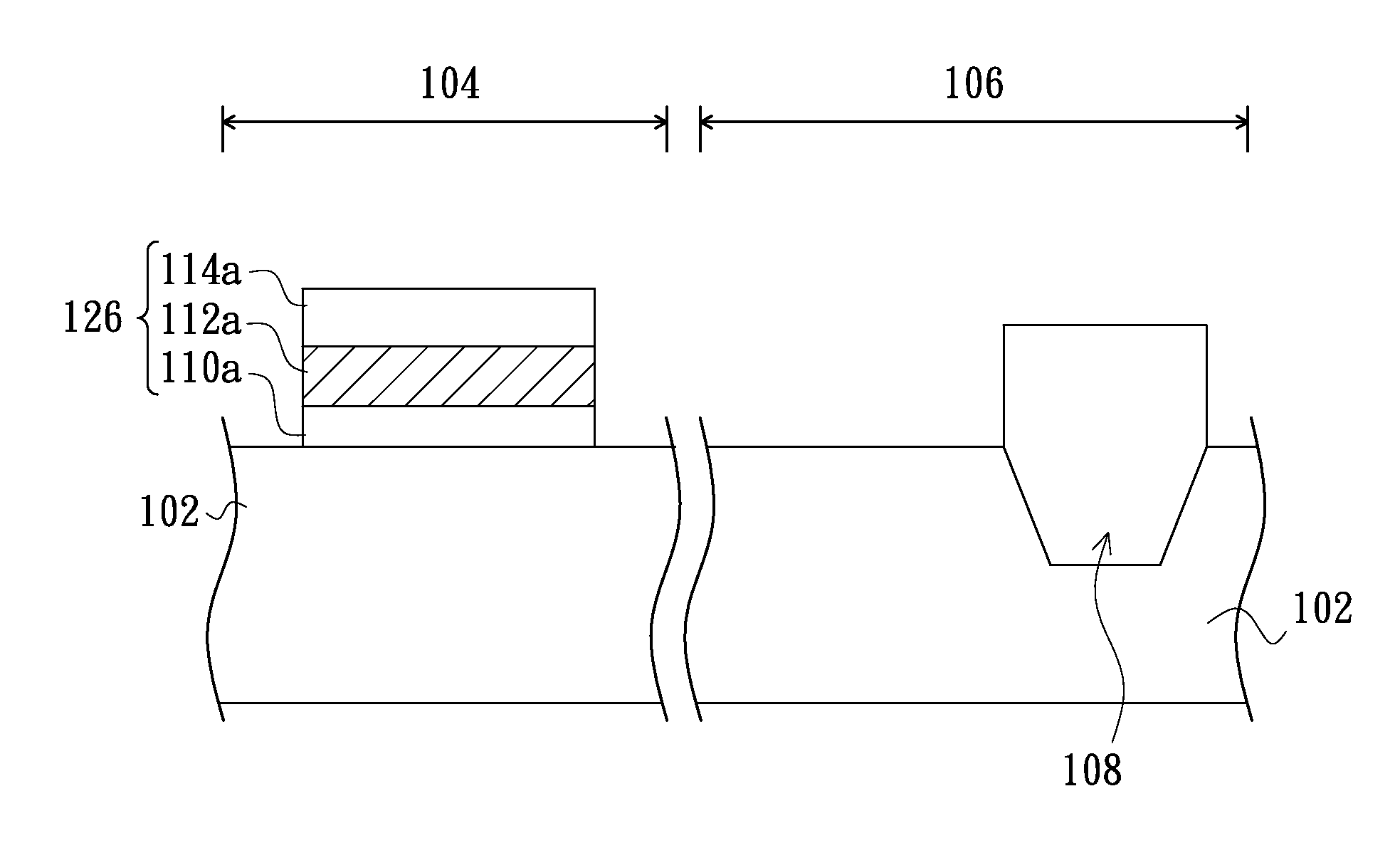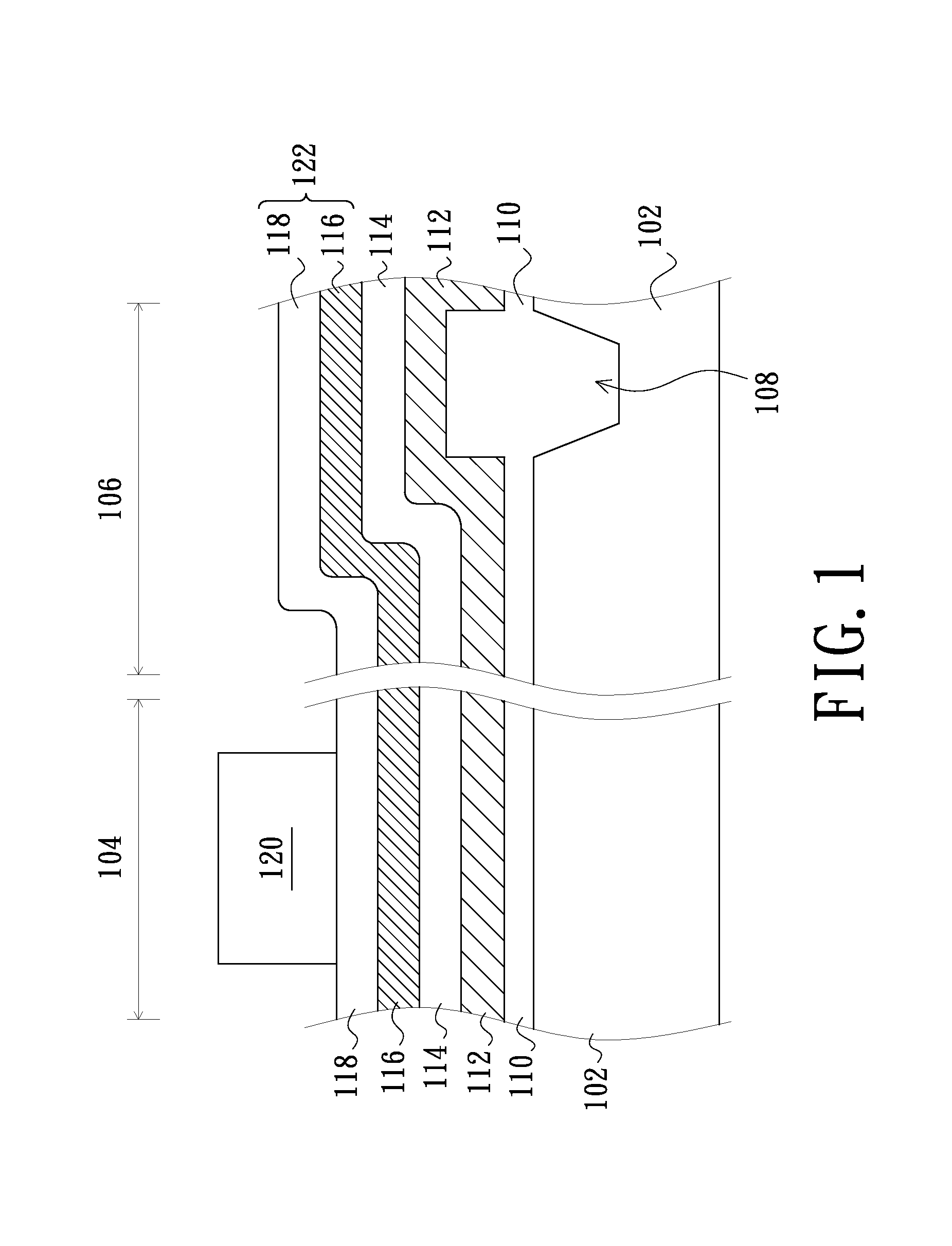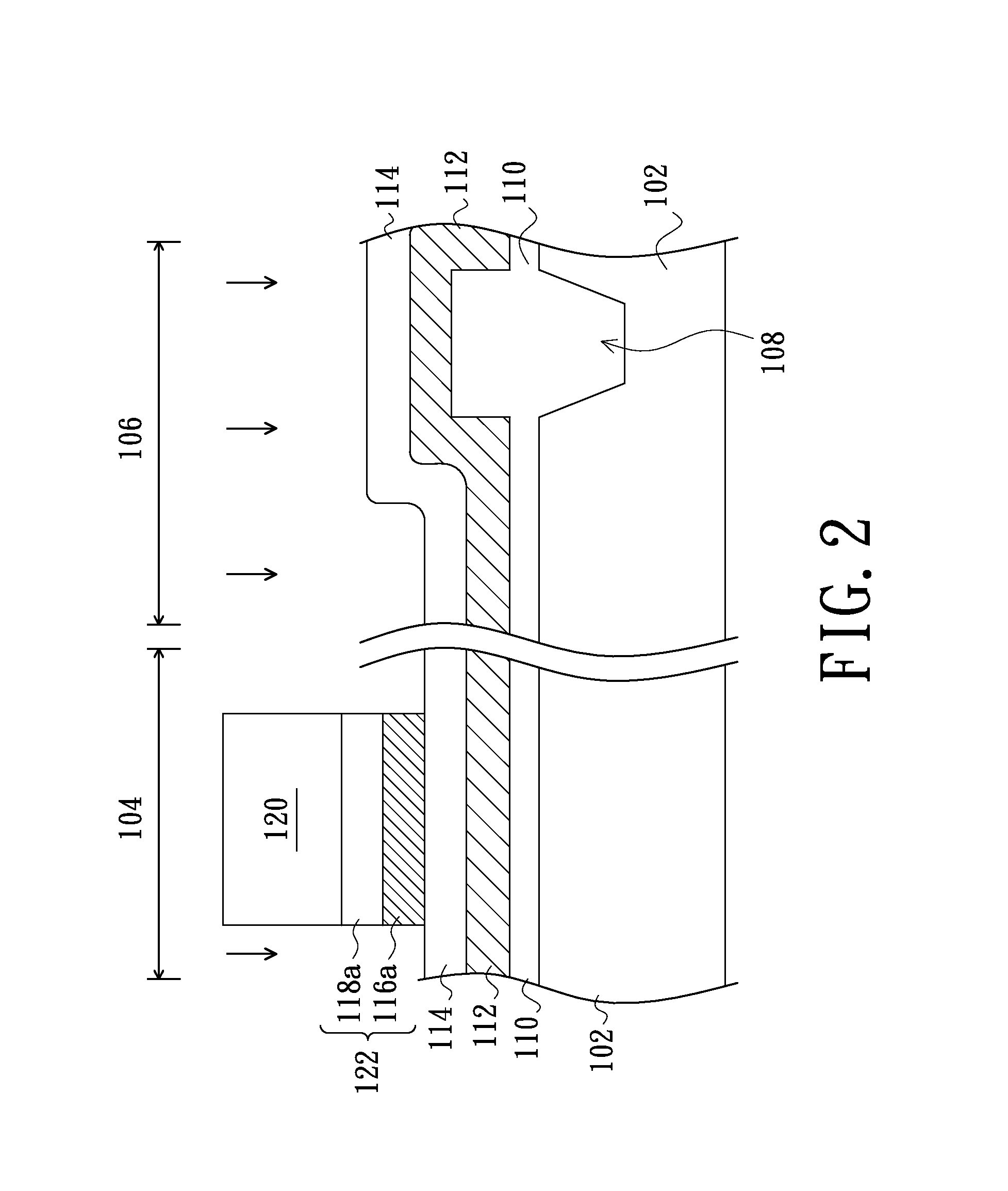Method of Etching Oxide Layer and Nitride Layer
- Summary
- Abstract
- Description
- Claims
- Application Information
AI Technical Summary
Benefits of technology
Problems solved by technology
Method used
Image
Examples
Embodiment Construction
[0014]Hereinafter, an embodiment of the present invention will be described in detail with reference to the accompanying drawings. Here, it is to be noted that the present invention is not limited thereto. Furthermore, the step serial numbers concerning the saturation adjustment method are not meant thereto limit the operating sequence, and any rearrangement of the operating sequence for achieving same functionality is still within the spirit and scope of the invention.
[0015]Referring to FIGS. 1 through 7, FIGS. 1-7 illustrate schematic views associated with a method of etching an oxide layer and a nitride layer in accordance with an embodiment of the present invention. In the drawings, same or like components or parts are designated by the same reference numerals. It is to be understood that the drawings are not drawn to scale and are served only for illustration purposes. As illustrated in FIG. 1, a substrate 102, for example, comprised of a silicon substrate, a silicon-containing...
PUM
 Login to View More
Login to View More Abstract
Description
Claims
Application Information
 Login to View More
Login to View More - R&D
- Intellectual Property
- Life Sciences
- Materials
- Tech Scout
- Unparalleled Data Quality
- Higher Quality Content
- 60% Fewer Hallucinations
Browse by: Latest US Patents, China's latest patents, Technical Efficacy Thesaurus, Application Domain, Technology Topic, Popular Technical Reports.
© 2025 PatSnap. All rights reserved.Legal|Privacy policy|Modern Slavery Act Transparency Statement|Sitemap|About US| Contact US: help@patsnap.com



